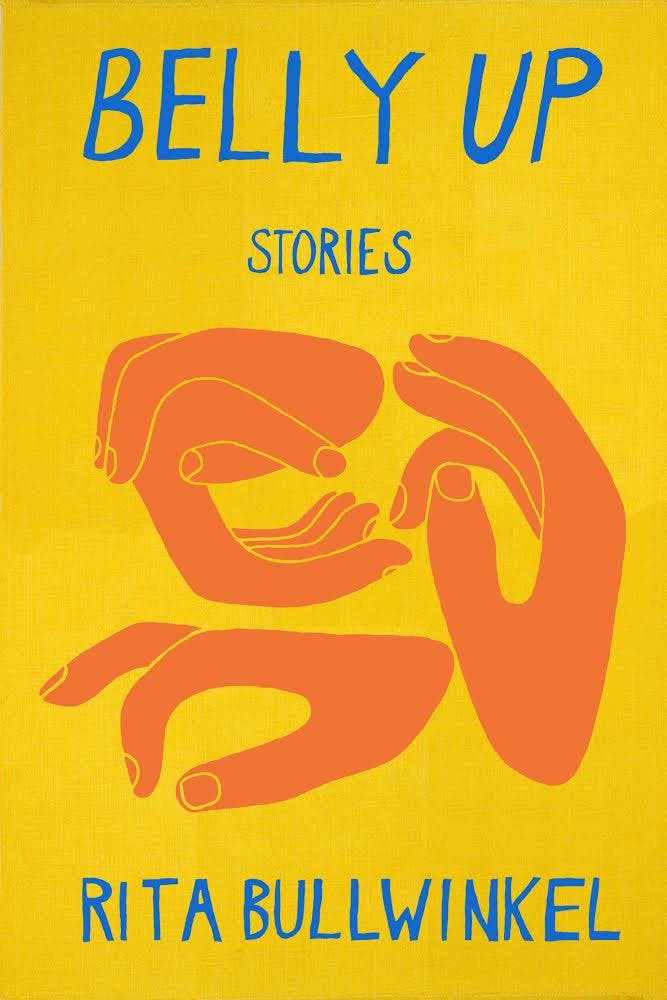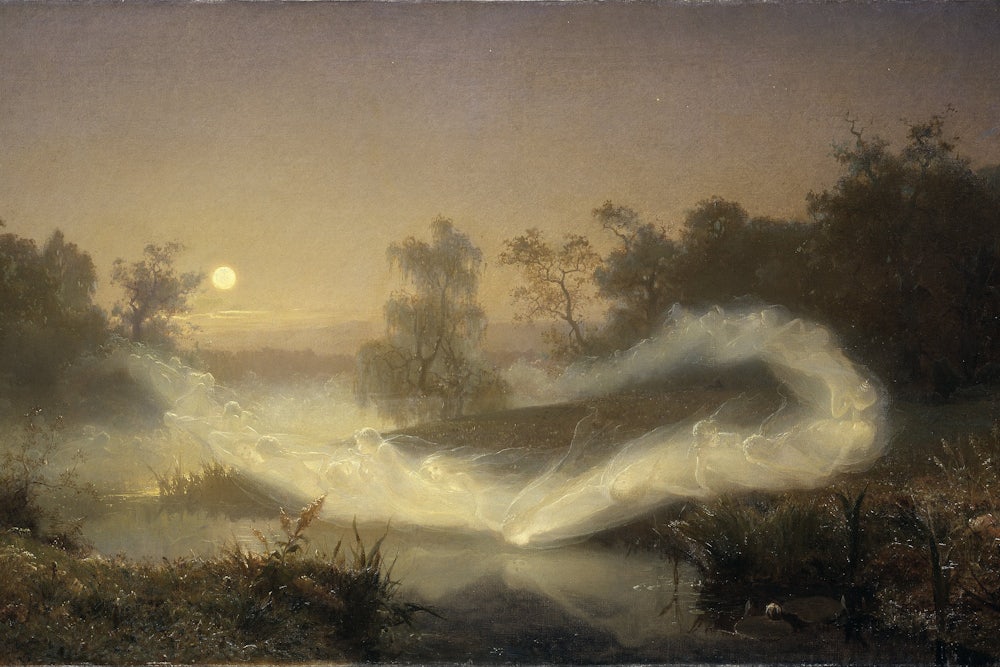“Weird fiction,” a term popularized by H. P. Lovecraft, became a self-serious genre during the twentieth century and the first years of this one.* In the hands of Samuel R. Delany, China Miéville, and Octavia Butler, it has taken on Borgesian solemnity, straying from Lovecraft’s haunting but minimal formulation: a “certain atmosphere of breathless and unexplainable dread of outer, unknown forces must be present.” But two recently released books—one old, one new—show us that those “unknown forces” do not have to remake the entire world in order to be weird. Our littles lives are strange enough.
The stories in Robert Aickman’s Compulsory Games, reissued this month by New York Review Books Classics, plumb the darkness curtained off by our normal, boring lives, as well as the inanity of those lives themselves. Aickman died in 1981. In life he was perhaps known best for co-founding a canal advocacy group called the Inland Waterways Association. (For more, see his 1955 nonfiction book, Know Your Waterways.) His grandfather Richard Marsh gained some literary notice for his 1897 bonechiller, The Beetle, which initially outsold Bram Stroker’s Dracula. In his off hours Aickman wrote luminously weird short stories. In each, some ordinary postwar British person—a chartered accountant, a banker, a civil servant, a member of the local committee for overseeing public space—is drawn quite unknowing into a netherworld.

In the story “Hands in Glove,” Winifred and Millicent take a trip to soothe the latter’s broken heart. They choose a picnic spot of “sedgy and umbrous” beauty. But what are these mushrooms that have sprung up where no mushrooms earlier were? Why do the cows in that field look so much as if they aren’t there at all? The practical, map-toting women are left on less solid ground, with hideous results. In the story “Marriage,” its hapless narrator Laming is glared at by laborers in the park who see him go on assignations with a certain Ellen when he is supposed to be dating her flatmate, Helen. “The railwaymen glowered motionlessly, awaiting strong tea, awaiting death, seeing death before them, not interfering.” When Laming later catches sight of Helen walking down the street, she is “carrying something weighty, this time slung over her left shoulder, which gave her an utterly absurd resemblance to the cod-carrying fisherman in the Scott’s Emulsion advertisement.” She looks absurd but that burden is coming, inexorably, menacingly, for Laming. He knows that advertisement all too well; “standing, as it did, for mens sana in corpore sano.”
That maxim—a sound mind in a sound body—is the sort of bourgeois faux-wisdom that fails to equip Aickman’s civil servants to deal with the supernatural. He ropes English fairy story into the mix, a rural chill reminiscent of The Wicker Man. But each protagonist fails to meet the spiritual demands of those myths. Faced with a brand new river at the end of his garden in the story “No Time is Passing,” a man named Delbert looks around him befuddled, but unfazed. “There was much mud, and not a seabird to scratch at it anywhere. Delbert, a male, was already becoming preoccupied with the working, practical details.” But those details will not protect Delbert from the prestidigitator living on the other side of that freaky river, a man who produces fruits from the thin air and then eats them whole—even, horrifyingly, a pineapple.
Belly Up, a debut story collection from Rita Bullwinkel, runs on a similar kind of shuddering mirth. Like Aickman, Bullwinkel writes very intimate and small lives filled with the details that make daily existence absurd, which are then shot through with thought experiment. “By the time my daughter came of age,” the story “Hunker Down” opens, “the economy was so bad that it was cheaper to hire someone to hold her breasts up than it was to buy her a bra.” The parents post a Craigslist ad for a breast-holder, and Mark fits the bill. Once Mark’s hands are gnarled beyond repair, the parents replaced Mark with Evan, with the first employee training the new one. “The two of them, Evan and Mark, could be seen before dawn in dutiful practice—hunching over in the dark, cupping air and pacing the length of our lawn.”

When an author paints bourgeois life with such attention and care only to rip it open with the supernatural, they do something different than the Gothic thrill-peddlers of old. Novels like Dracula, The Mysteries of Udolpho, or Frankenstein often drew upon the material of ordinary life, either by using epistolary forms or simply beginning their narration in the normal world. But each is powered by a desire for the sublime. Death and magic are romantic old subjects. And Gothic novels, especially the older ones like Walpole’s medieval-flavored The Castle of Otranto (1764), often looked backwards in time.
Aickman is not Gothic because his stories contain no romance and no serious interest in the past. The stuff of the past rears up—devils, bodies from the grave—but the setting is almost rigorously boring. His ambitions are smaller, less philosophical, and more amusing. We can see Bullwinkel as an inheritor to Aickman’s particular strain of weird fiction. She’s not alone: Ottessa Moshfegh’s 2017 story collection Homesick for Another World also rubbed the prosaic against the disgusting and the magical. Ordinary life is boring, all these writers show, and that is precisely where the horror lies.
Both Moshfegh and Bullwinkel are literary writers, MFA-holders. Aickman didn’t go to university at all. But Bullwinkel and Aickman share important interests: ecclesiastical horror, ghost stories, the grotesquery of ordinary romance. A big difference lies in their treatment of children. Aickman looks back on childhood as a sort of conventionalizing process that hampers adult imagination, such as a scene in “Marriage” of the boys “at the Grammar School, when forbidden to speak in detention.” But Bullwinkel uses children’s eyes to see madness.
In “Nave,” the story that seems to be Belly Up’s soul and the inspiration for its title, the narrator says her father told her that “our church had a belly.” It was called the nave. “When we went to church I brought it things I thought it would like,” she writes. “I stuffed almonds in my pockets and gummy bears in the backs of my shoes. I whispered things to the floor, sure that the nave could hear me. I said, ‘I know you must be hungry because all the adults bring you is money.’”
The narrator of “Nave” crams her offerings into the church’s floor, imagining that a ravenous being lies below. Both Aickman and Bullwinkel perform autopsies on hidden entities that lie just under the surface of daily existence. Is that hungry spirit god, the devil, some mythical creature, or simply our own hideous human nature? By refusing grand stakes and instead conducting funny fictional experiments, Aickman and Bullwinkel get closer to the truth; closer to describing whatever lives under the floorboards.
*This article originally stated that the Irish writer Sheridan Le Fanu coined the term “weird fiction.” We regret the error.
